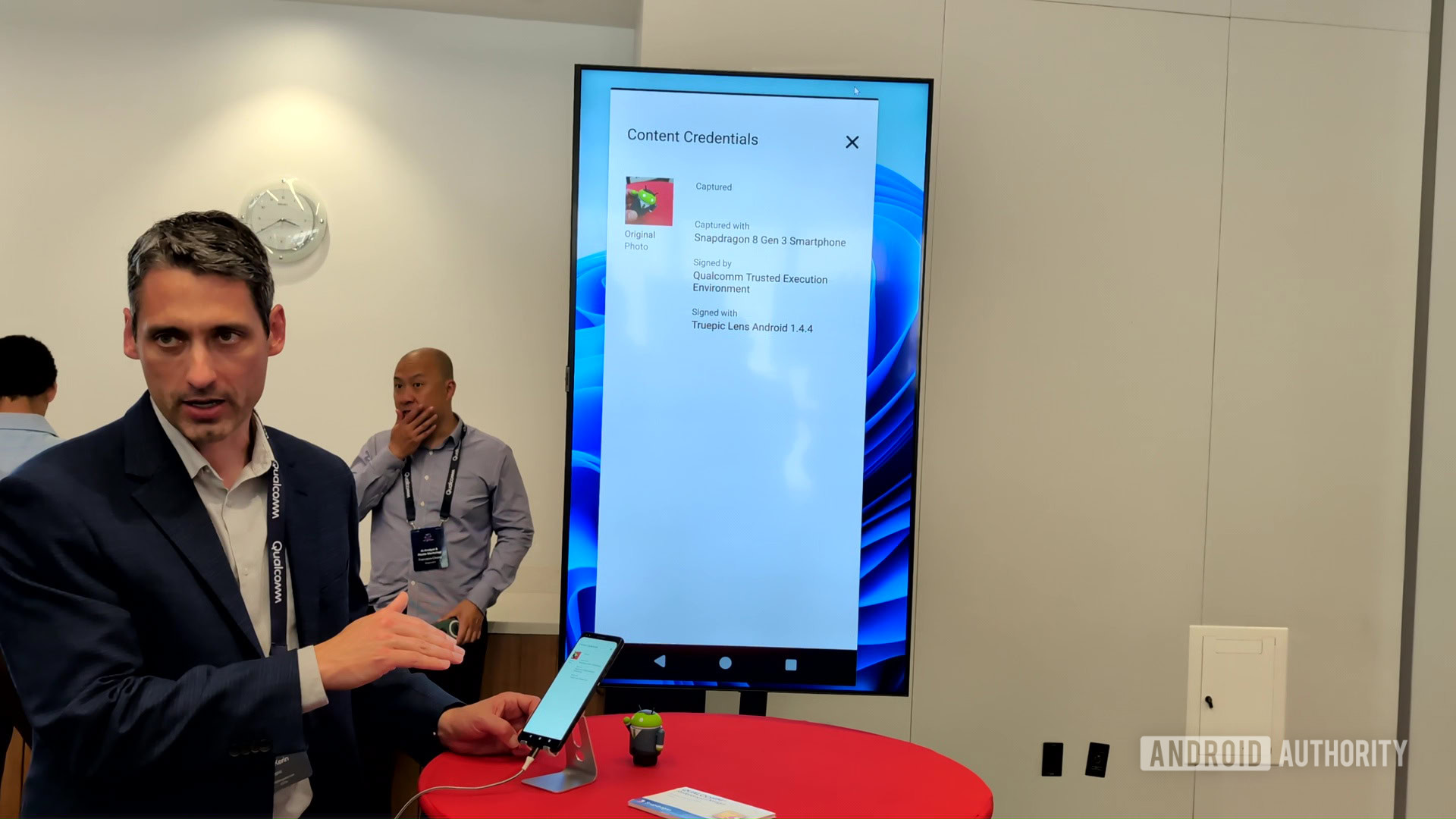Affiliate links on Android Authority may earn us a commission. Learn more.
Truepic is a name you don't know yet, but it's going to be important
Published onJune 26, 2024

- A company called Truepic has partnered with Qualcomm to bring system-level watermarking for AI images on Snapdragon devices.
- It will allow users to easily see if an image has been either completely AI-generated or even augmented with AI tools.
- However, Truepic’s technology will need to be adopted on an enormous scale for it to truly be effective.
Nowadays, generating an image using artificial intelligence is trivial. There are loads of free systems available for this, including ones built right into Android phones, such as through Google’s Gemini or Samsung’s AI wallpaper generator. Additionally, generative AI tools are becoming a popular way to edit photos, with Google’s Magic Editor being a key leader here.
The problem, though, is that it’s now difficult for someone to tell if an image is real, wholly generated from AI, or simply manipulated using AI tools. This opens the door for waves of misinformation that could devastate society.
A company called Truepic has been trying to reign in this issue for a few years now. It offers software that adds cryptographic metadata to images, identifying and tracking AI manipulation. Essentially, it’s a watermarking system that securely “tags” an image as AI-generated or AI-manipulated and then allows anyone to check those tags. Thus, you have an easy way to check an image and say, “Ah, this is not real,” preventing you from believing a false image is a true depiction of reality. I’ve talked a bunch about how important a system like this will be.
At a recent Qualcomm event focusing on AI advancements, I got to see Truepic’s system in action. Adam Kerin — VP of marketing at Truepic and former Qualcomm employee — demonstrated taking a photo and then checking its tag with Truepic. He then added an AI augmentation to a photo and rechecked it. You could see both the information of the original image and information related to the AI manipulation, allowing you to know not only that AI had toyed with the image but also exactly what it had done. Kerin said this could go on indefinitely, giving you a secure changelog of a photo, essentially.
Honestly, it was really cool to see, and made me feel, for the first time, that AI manipulation of images might not bring the downfall of humanity (I’m only slightly kidding). Unfortunately, as great as this demo was, it comes with a giant asterisk.
Truepic has a hard road ahead
The hurdle Truepic faces is broad availability. In order for an image to receive a secure tag, the device and/or app that creates/manipulates/captures that image needs to support Truepic. Additionally, the system checking that tag also needs to support Truepic.
Thankfully, Truepic and Qualcomm have been working together to overcome this hurdle. In the Snapdragon 8 Gen 3, Truepic’s software works in the chip’s Trusted Execution Environment. This would allow an image created/manipulated on a Snapdragon 8 Gen 3 phone to be tagged by the chip and another phone with that chip to then read that tag.
This is a significant step, considering Qualcomm has a huge market share of the billions of Android phones out there. However, there are still significant limitations. For example, if you capture a photo with a Snapdragon phone and then upload that photo to Instagram (which does not currently support Truepic), you’ll have no way to check that photo’s integrity on Instagram. In other words, pretty much every major platform would need to support Truepic for this to work, which is a tall order.
One silver lining here, though, is that Truepic is based on an open-source protocol. That means if hardware and software creators don’t want to work with Truepic, they can still adopt the open-source protocol and preserve Truepic’s metadata. This is only a slightly less daunting task, but could speed up adoption.
Qualcomm’s and Truepic’s partnership is not new, but the integration of Truepic’s system is pretty fresh in the Snapdragon 8 Gen 3, having only rolled out on recent pressings. Hopefully, over time, Truepic will become ubiquitous across all of Qualcomm’s chips, which should have a cascading effect of it eventually coming to competitor chips from companies like Samsung, Google, MediaTek, and maybe even Apple.